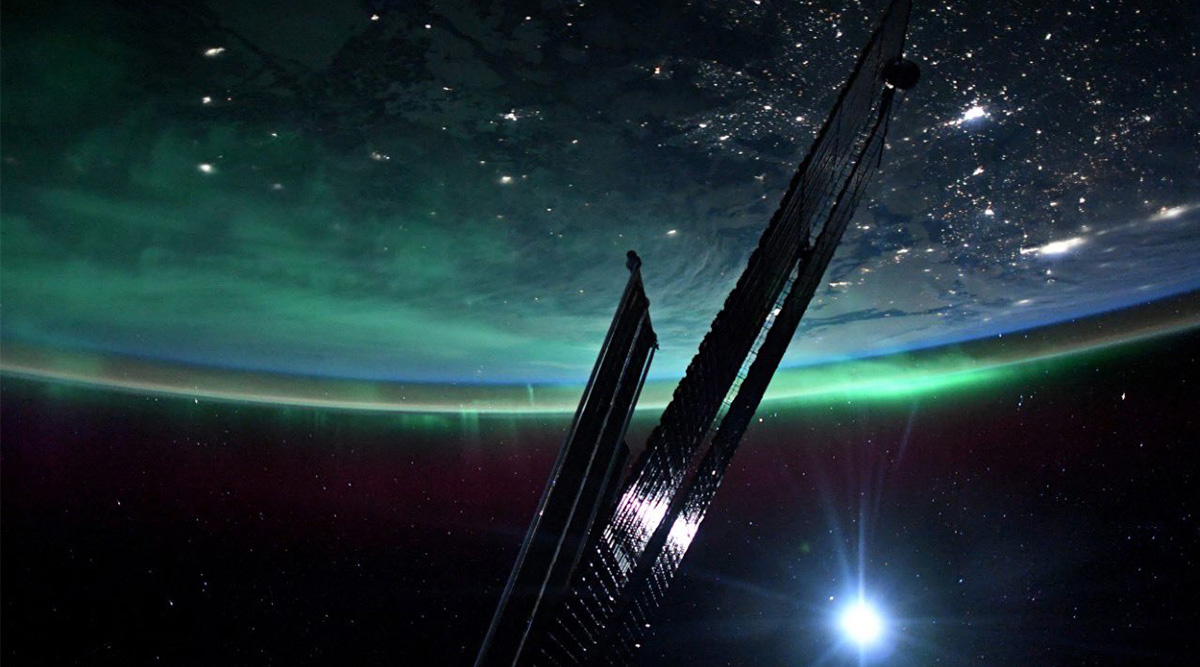
Auroras are some of the most stunning natural phenomena we get to see on the planet and there is a chance that they could be “supercharged” this week due to a strong solar storm.
Auroras are a collection of tiny flashes that occur when charged particles (electrons, protons, etc.) collide with the gases in our planet’s upper atmosphere. A significant geomagnetic storm is set to happen this week, caused by particle ejections from the Sun, according to Spaceweather.com. This could potentially “supercharge” auroras where they are visible.
According to the space weather monitoring website, a coronal mass ejection (CME) hit our planet’s magnetic field on May 7. But contrary to forecasts, it had a weak impact and it did not cause a significant geomagnetic storm. However, shortly after, the Sun reportedly launched another CME towards our planet.
CMEs are bubbles of coronal plasma that are ejected from the Sun over the course of several hours. They often occur alongside solar flares, which are explosions on the Sun’s surface but CMEs are also known to occur independently.
On May 7, shortly after a CME hit our planet, a “backwards active region” on the Sun exploded and produced a long-lasting solar flare and the blast is seemingly Earth-directed. The extreme ultraviolet radiation from the flare ionised the top of our planet’s atmosphere. This could have caused a minor shortwave radio blackout over the western United States and the Pacific Ocean.
This #NASA model shows that a coronal mass ejection could hit our planet tomorrow.
Source: NASA via Spaceweather. pic.twitter.com/xuEf9uCbNW— IE Science (@iexpressscience) May 9, 2023
https://platform.twitter.com/widgets.js
This solar explosion also threw another CME at our planet. A NASA model of the same predicts that this CME could arrive at our planet on May 10. This could trigger G2 (moderate) or G3 (strong) class geomagnetic storms. Geomagnetic storms like this could boost auroras in the parts where they are visible and could even make them visible in regions where they usually aren’t.
In recent years, solar activity has been ramping up gradually and scientists expect this trend to continue until solar maximum, which is predicted to happen in 2025, according to NASA. Solar maximum refers to the period with the highest and most intense solar activity.
https://news.google.com/rss/articles/CBMiYmh0dHBzOi8vaW5kaWFuZXhwcmVzcy5jb20vYXJ0aWNsZS90ZWNobm9sb2d5L3NjaWVuY2Uvc3Ryb25nLXNvbGFyLXN0b3JtLWF1cm9yYXMtdGhpcy13ZWVrLTg2MDAyNTkv0gFnaHR0cHM6Ly9pbmRpYW5leHByZXNzLmNvbS9hcnRpY2xlL3RlY2hub2xvZ3kvc2NpZW5jZS9zdHJvbmctc29sYXItc3Rvcm0tYXVyb3Jhcy10aGlzLXdlZWstODYwMDI1OS9saXRlLw?oc=5
2023-05-09 12:35:28Z
2012854896
Tidak ada komentar:
Posting Komentar